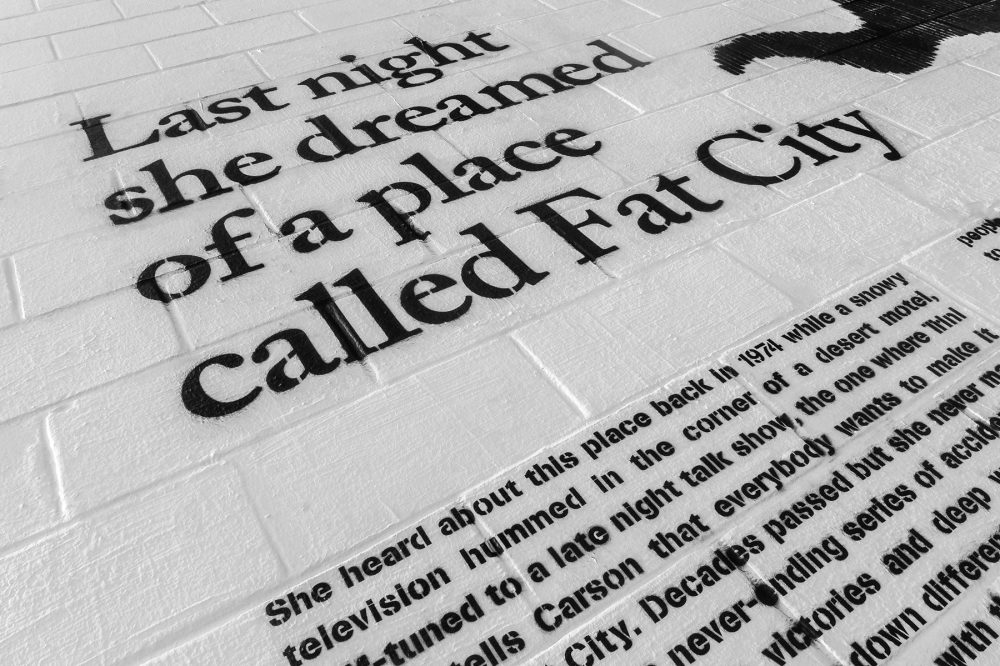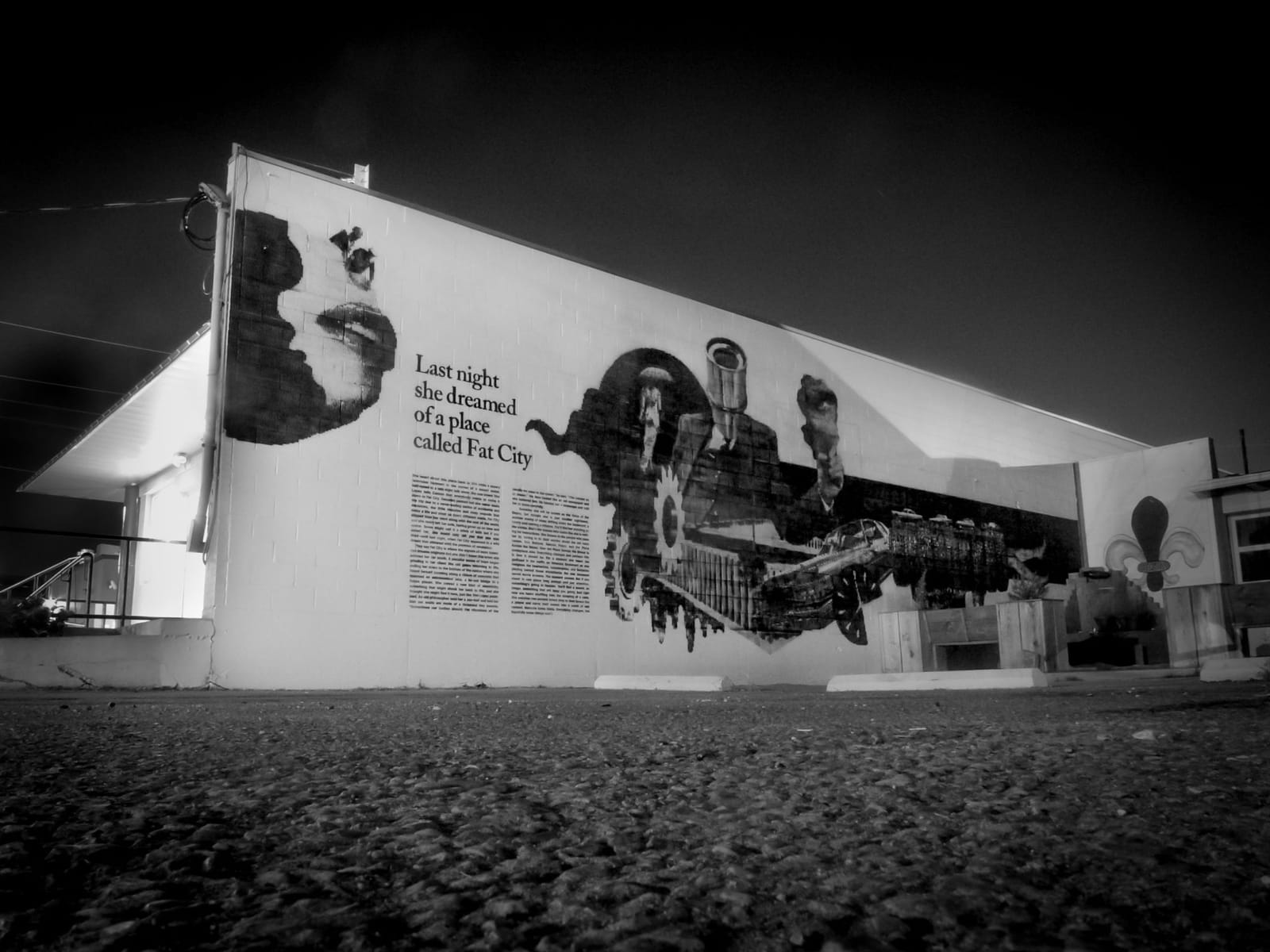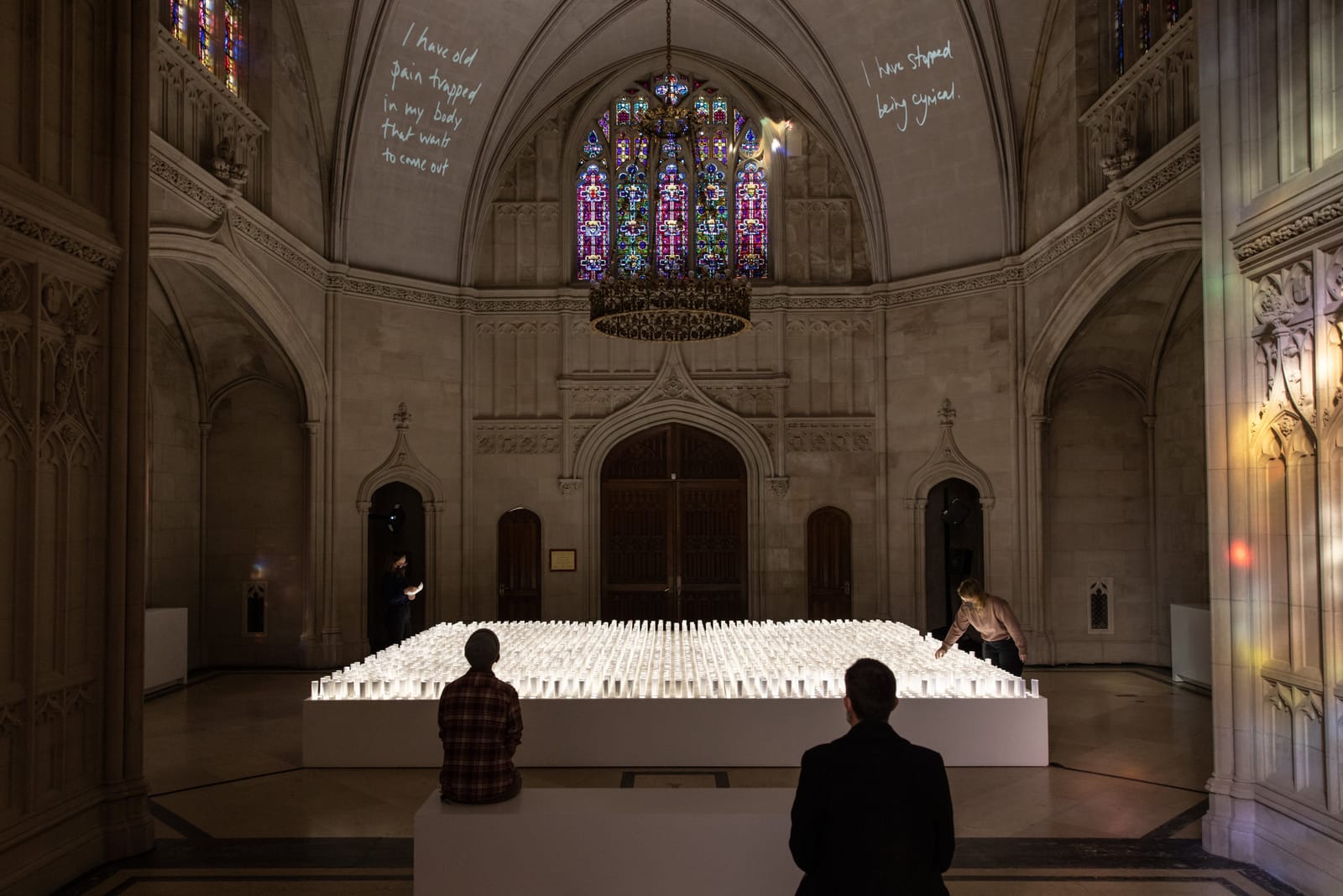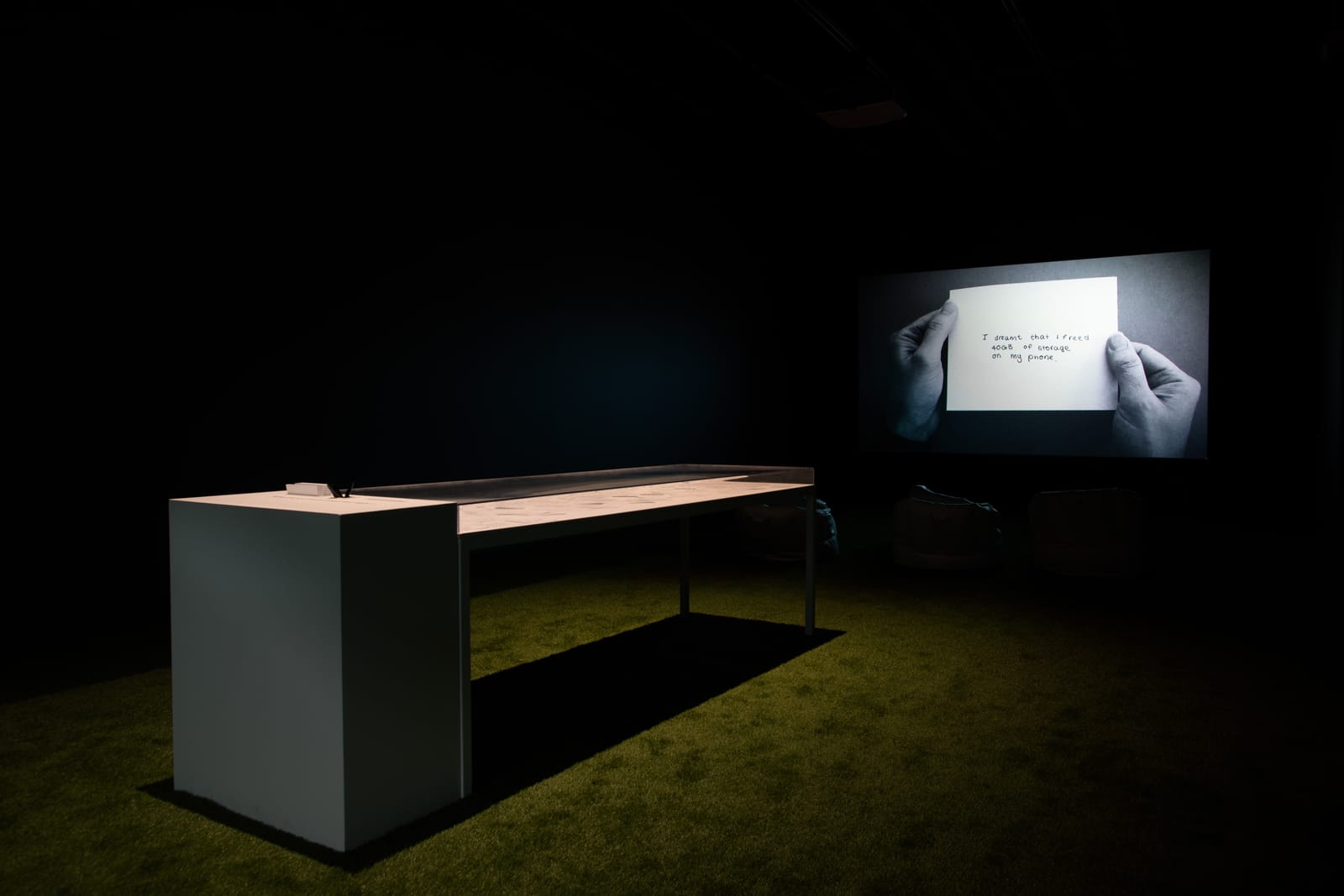Combining a surreal collage with a short fable, this mural in Fat City invites passersby to reflect on the mythologies we create for our communities and ourselves. Inspired by the neighborhood’s flamboyant reputation in the 1970s, I wrote a story that describes a woman’s search for revelation, and Candy Chang created a collage of noir imagery that illustrates her quest using one thousand vertical lines that evoke a curtain of beaded rain, accentuating the dreamlike quality of the fable.
She heard about this place back in ’74 while a snowy television hummed in the corner of a motel, half-tuned to a late-night talk show, the one where Trini Lopez tells Carson that everybody wants to make it down to Fat City. Decades passed, but she never made the trip due to a never-ending series of accidents and decisions, the little victories and wounds that make a life and steer us down different roads. Fat City slipped from her mind along with the rest of the world, and she rarely left her sofa, having given up on time and space. Some might call it a crisis of faith, but if you asked her, she’d only tell you that she was very tired—until the night Fat City appeared in a dream that shivered with the promise of revelation.
They say Fat City is where the signals of most American dreams originate, but she didn’t know this when she pointed her car south. Hope began to grind in her chest like old gears returning to life, pulling her to the bottom of the nation, where she raced along a ribbon of concrete that spanned an astronomical lake, a far-out bridge to a future planet. She craved a new kind of electricity, something that might shock her back to life, and she thought she might find it down here, just like Trini Lopez promised. An old philosopher sold her a sno-ball and told her that our souls are made of thousands of tiny sounds. “Sometimes our bodies absorb the vibrations of the people we pass in the street,” he said. “This causes us to dream.” His face looked like an old newspaper, and she believed him. He handed her a telescope and told her to listen carefully.
Someday she’ll be known as the Voice of the Bayou, but tonight she’s just another nighthawk, another enemy of sleep drifting down the boulevard, a lonely soul craving a witness. You’ll find her standing on the corner. She’s the woman who looks like she is waiting for instructions. She listens to the people who pass her by, tuning in to their stories about the old neon names: Don Quixote, Sancho Panza, and the Place Across the Street. Now the Place Across the Street is someplace else. Everything changes, and perhaps this is how it should be. She hears the godhead in the traffic on Veterans Boulevard as she imagines the heartaches and fantasies playing behind those windshields like a thousand secret movie screens. The moment passes. But if you stand in one place long enough and pay attention, something’s bound to happen. You might catch a sound or an image, something that will keep you going. And right now, she hears shuffling feet, the scraping of a cane. She watches two ancient lovers drop to their knees like a prayer and carve their names into a patch of wet cement. Malcolm loves Marie. Everything changes, but hopefully, some things won’t.

Artwork by Candy Chang. Story by James A. Reeves. Part of a series of murals supported by Fat City Friends and the Arts Council of New Orleans. 3220 Edenborn Ave. Metairie, Louisiana. Acrylic, 52′ x 16′. Installation by Chang and Reeves. Wall preparation and sealing by Bruce James, Barry Patin, and Broq James.








